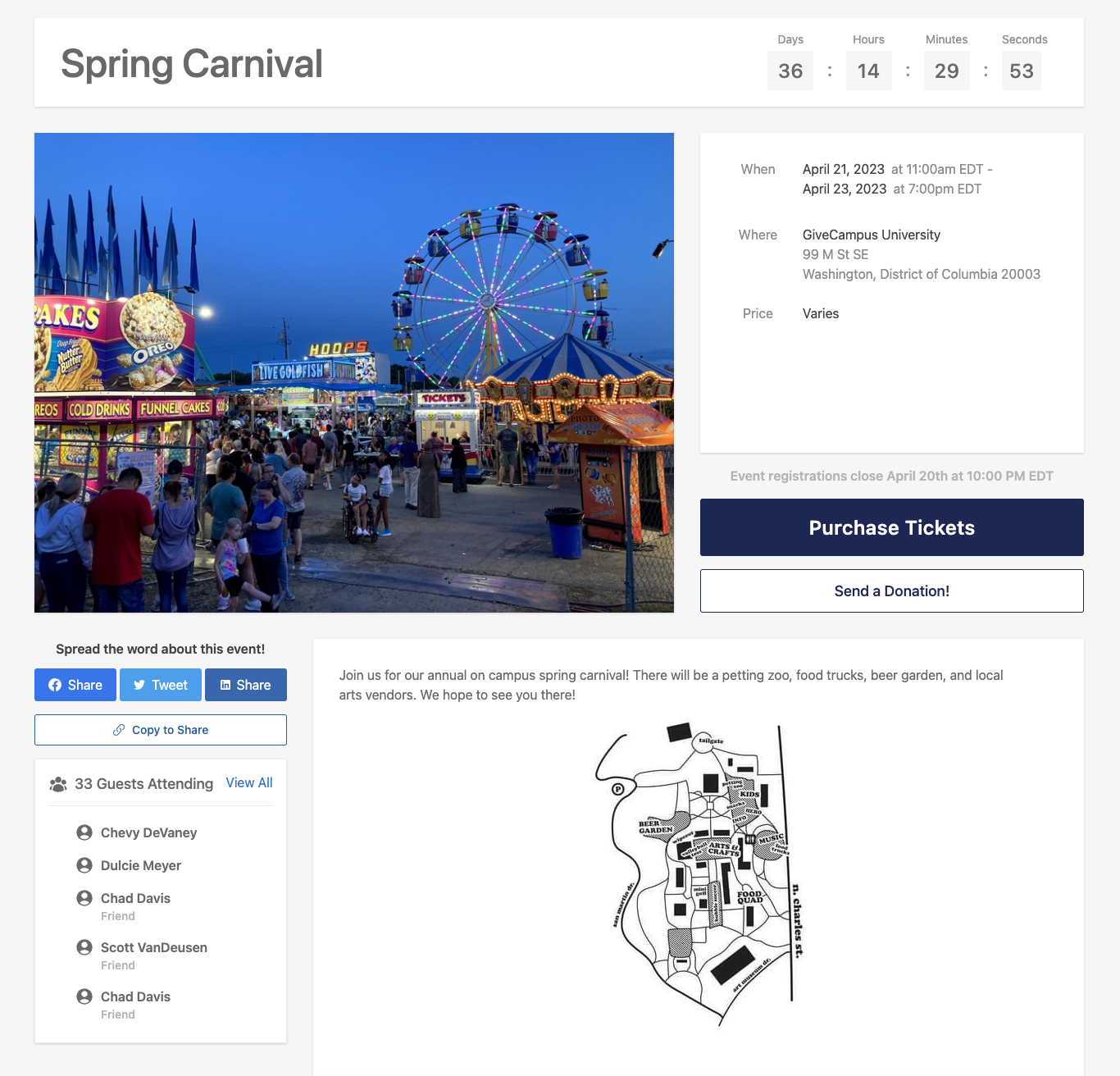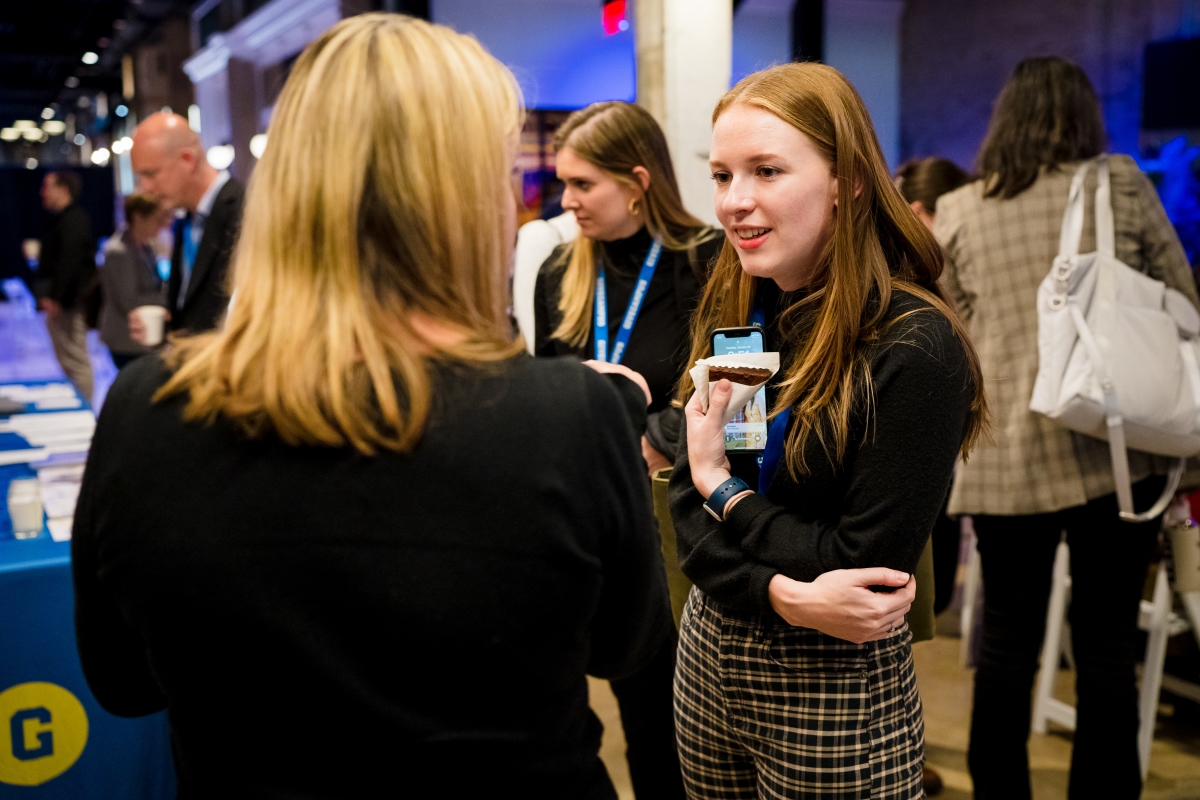6 Steps to Make Your Next Fundraising Event a Success
Fundraising events are an essential part of every educational fundraiser’s toolkit and provide strategic opportunities to not only generate donations, but also to engage, educate, and steward, leading to increased giving and better donor retention over time. While great fundraising events can be hugely impactful, they require thoughtful planning to execute well. Here are six steps to make your next fundraising event a success.
1. Start with the “why”
Whether your intent is to ask participants to make a donation, feel appreciated for their contributions, or simply show up and enjoy, you should start your planning efforts by aligning with your fundraising event planning team on why you are hosting this fundraising event in the first place. Having a shared understanding of your fundraising event’s purpose will make it easier to define your target audience, craft relevant messaging, and set appropriate goals.
For example, if your “why” is about engaging new constituents and generating awareness, you may want to anchor your fundraising event strategy around a specific goal for the number of in-person connections, and tailor messaging to educate newcomers about your mission. On the other hand, if your “why” is about deepening involvement of existing supporters, you may want to anchor your fundraising event strategy around the number of donor meetings scheduled, and center messaging around specific opportunities to contribute.
2. Choose the right event type
Once you’re clear on your fundraising event’s purpose, you can think strategically about the type of event that best supports your goals and is most likely to appeal to your target audience. Events that appeal to loyal supporters may look radically different than those that appeal to brand new constituents. Similarly, the right type of event for the class of 2023 is likely not the right type of event for the class of 1973.
As a general rule of thumb, opt for smaller, more intimate fundraising events when the target audience includes VIPs and regular donors, and more casual fundraising events with low-pressure opportunities to mingle when the target audience is new constituents. Demographic segmentation should also inform what time of day your fundraising event is held–for example, donors who are past retirement age are more likely than young working professionals to attend daytime events on weekdays.
Another important decision is whether your fundraising event is free or paid. Not all fundraising events need to be paid—in fact, free events can still be used to promote a specific fundraising campaign or giving opportunity, and since they have a lower barrier to entry, they may allow you to engage a wider audience. On the other hand, paid events can be a powerful way to generate more dollars, and multiple ticket types can allow you to offer ticket options at different price points (including free) so you maximize dollars raised while remaining price-accessible for all of your guests.
3. Get the word out
To drive RSVPs, start marketing your fundraising event well in advance. For smaller, more casual fundraising events like happy hours, start promoting your event at least one month prior. For larger, more complex events like galas, start promoting six months in advance or more as these generally involve a greater commitment from both attendees and fundraising event staff.
On your event page itself, it’s a great idea to include social media share extensions that invite guests to spread the word in their own personal networks. This can amplify the reach of your in-house marketing efforts and capitalize on highly effective peer-to-peer marketing.
In addition to marketing the fundraising event itself, you can also use your event page to promote your fundraising campaigns and giving programs. It should be easy for donors to make a gift directly from your event page, no matter how they RSVP. This can be challenging to implement if you are using a free events platform not connected to your institution’s reporting, or a homegrown solution that requires development effort to set up. Some event management platforms, like GC Events, provide built-in ways to link an existing campaign or giving form to your event page, and even give guests the option to “add a donation” to the same transaction as their ticket purchase.

4. Know who’s coming and who’s who
Fundraising events are all about opportunities for meaningful connection. Think about what information you should include on your registration form to ensure your fundraising event is a positive experience for every attendee. For example, if you plan to serve food, ask about dietary restrictions and food allergies. If you plan to hold your fundraising event at an offsite location, ask about special accommodations and accessibility requirements.
In the days leading up to your fundraising event, have your team meet to review the list of registered guests and note their affiliation, class year, and giving history. This information can help inform seating arrangements and which team members / staff you assign to welcome guests. During the event, be sure to welcome individual guests by name and thank them for previous contributions and continued support.
Publishing your guest list can help drive attendance. Often, people like to know who else is attending an event before they RSVP—especially if it’s a networking event or reunion. Event registration and ticketing platforms like GC Events offer the opportunity to make your guest list public. You can even include affiliation and class year (where applicable) to make it easy for prospective attendees to find former classmates and connections.
5. Keep the momentum going
Build upon event momentum with a strong post-event follow up strategy. Be sure to send out thank yous, donor follow-ups, and feedback surveys in a timely manner while the experience is still top of mind for attendees. A good rule of thumb is to send thank yous within 24 hours, event recaps within 48 hours, and feedback surveys within 72 hours or before end of week (whichever is sooner).
Post-event follow-ups are an extension of your event experience and can be another valuable touch point with your target audience, including no-shows Event registration solutions like GC Events allow you to download a list of guests that includes their registration status, making it easy to segment your outreach and personalize messaging. Reaching out on the heels of a memorable event experience may be a good time to make an ask, or reinforce an ask you made during the event.
6. Solicit feedback from attendees and staff
While events have enormous potential to support your fundraising goals, they also require significant investment, time and effort. It’s important to ask for critical feedback that can help your team assess opportunities to increase ROI.
Most guests will be happy to share feedback, especially if you make it easy for them to share their honest opinions. Keep feedback surveys short and sweet—no more than five questions, and include at least one question that really pushes for opportunities for improvement. Giving guests the option to submit feedback anonymously can also invite more candor and expose opportunities for improvement you may not hear about otherwise.
In addition to feedback from attendees, solicit feedback from your fundraising events team. Schedule an internal debrief the day after your event and discuss any key takeaways, as well as any time-sensitive opportunities. If possible, include staff members responsible for processing gifts and payments made in association with your fundraising event. They may surface opportunities to gain efficiency in other important areas not directly related to event strategy—such as reporting gift and registration data back to your CRM. Switching to an event registration solution that is built directly into your fundraising platform, like GC Events, can save your team time by simplifying reporting and eliminating the need to manually reconcile event-related donations and payments.
Summary
Fundraising events are a powerful way to increase engagement and participation, but they require thoughtful planning to successfully execute and achieve desired results. Since fundraising events require substantial investment, it’s essential to plan effectively and maximize event ROI. By starting with the “why,” educational fundraisers can choose the right event type, marketing strategy, and event logistics strategy to achieve fundraising event goals.
Ready to take a deeper dive into successful event planning? Watch our popular “Be the Host with the Most” webinar on demand for more tips and tricks—plus a sneak peek at our new event registration and ticketing solution built specifically for educational fundraisers.
If you’re interested in learning more about GC Events and the full GiveCampus platform, speak with a fundraising specialist.




